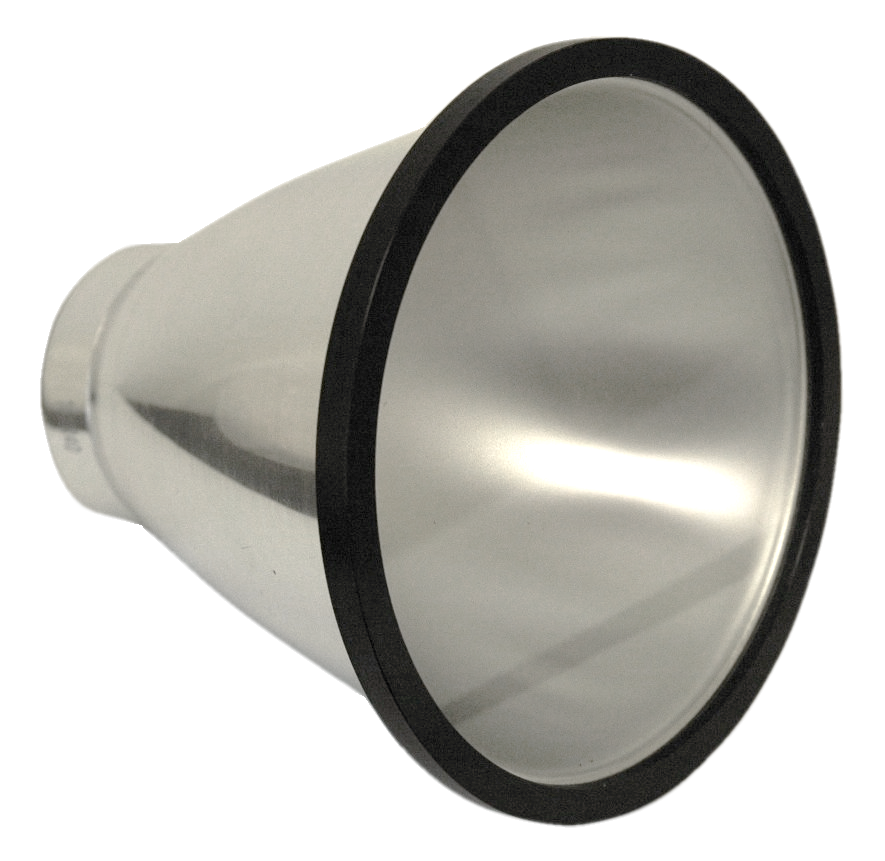
Check that the incoming beam is at an appropriate height and is propagating parallel to your reference surface.To align your off axis parabolic mirror to collimate a spherical wave, follow these steps: We recommend using a precision machined mount since alignment of the other six degrees of freedom is very sensitive. Since off axis mirrors are not rotationally symmetric, rotation must be restricted around the optical axis. Typically an adaptor plate will be placed between the OAP back surface and a kinematic mirror mount. The flat back of each of our OAP mirrors is equipped with three threaded holes for mounting. We also provide off-axis parabolic mirrors in custom sizes and coatings upon request, so you can find an OAP mirror to meet your exact project requirements. Our standard mirrors come in diameters between 2.5 and 10 inches and curvatures 15, 30, 45 and 60 degrees off-axis. To provide the best results, we hand-polish our parabolic mirrors from large aluminum blanks and finish them to an accuracy of 1/20 lambda RMS. At Shanghai Optics, we use the latter method to produce high-quality standard and custom OAP mirrors quickly. A simpler way is to cut and shape the off-axis paraboloids from metal blanks. One method involves using a rotating furnace to form the mirrors from a molten base material. Manufacturers can produce off-axis parabolic mirrors in several ways. How Are Off-Axis Parabolic Mirrors Produced? If a spherical wave enters on axis, it won’t produce a collimated beam either. If a collimated beam is incident upon the off axis mirror from an off-axis focal angle, it will not produce a diffraction limited image. While using OAPs it is also important to remember that the orientation matters. They can produce a perfectly collimated beam from a spherical wave, or diffraction limited imaging when focusing a collimated beam, but when they’re used at finite conjugates the image quality will be abysmal. Off axis parabolic mirrors should only be used at infinite conjugates. Limitations of an Off Axis Parabolic Mirror They can be used in sequence to create a relay system, since with multiple mirrors you can switch between focal plane and pupil plane of your system without degradation in image quality. Our OAP metal mirrors are used in spectrometers, interferometers, astronomical optical instruments, spectrum analyzers, and in beam expanders and beam collimators. Applications of Off-Axis Parabolic Mirrors The unrestricted access these mirrors give to the system’s focal point also leads to compact system designs. This makes off-axis parabolic mirrors the optic of choice for long-range and precision instrumentation. But since these mirrors focus light to offset points, outside the collection area, there is no issue with receiver shadowing. Depending on how far away from the axis the section originates, an off-axis parabolic mirror may feature a large or a small angle. These mirrors are sections of a parent paraboloid that are taken from a point other than the center axis. Off-axis parabolic mirrors are designed to eliminate this problem. This blocks a significant part of the mirror from reflecting light, resulting in substantial signal loss. Parabolic mirrors are effective at collecting collimating light and focusing this light to a point, but the receiver will often cast s shadow on the paraboloid’s vertex. This is the point where the curvature is greatest, and where the paraboloid is symmetrically divided by its axis. Typically made of a highly reflective material such as aluminum, a standard parabolic mirror will center on the vertex of the paraboloid. Understanding Parabolic MirrorsĪ parabolic mirror is a reflector in the shape of a circular paraboloid.

Shanghai Optics high quality off-axis parabolic mirrors can be used in broadband UV, visible, and IR applications.

It does this with high accuracy, and is not dependent on wavelength. This makes it useful for collimating light from a point source as well as focusing collimated light to a point. Off Axis Parabolic Mirror for Every ApplicationĪn off axis parabolic mirror is an optical device which transforms plane waves into spherical waves and spherical waves into plane waves.

Broadband Non-Polarizing Beamsplitter Cube.


 0 kommentar(er)
0 kommentar(er)
